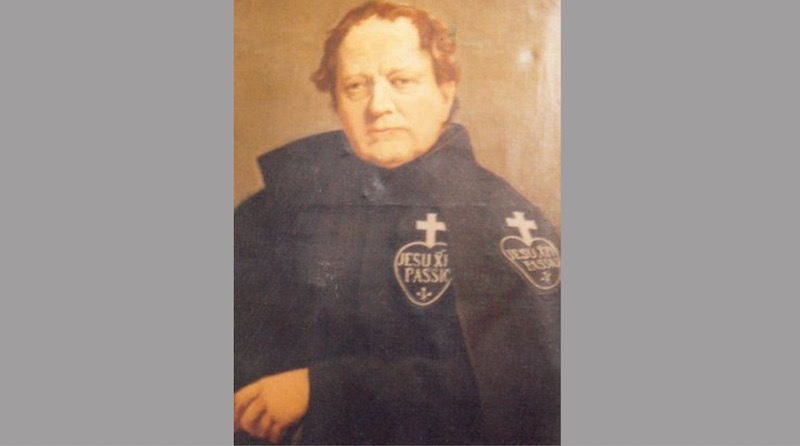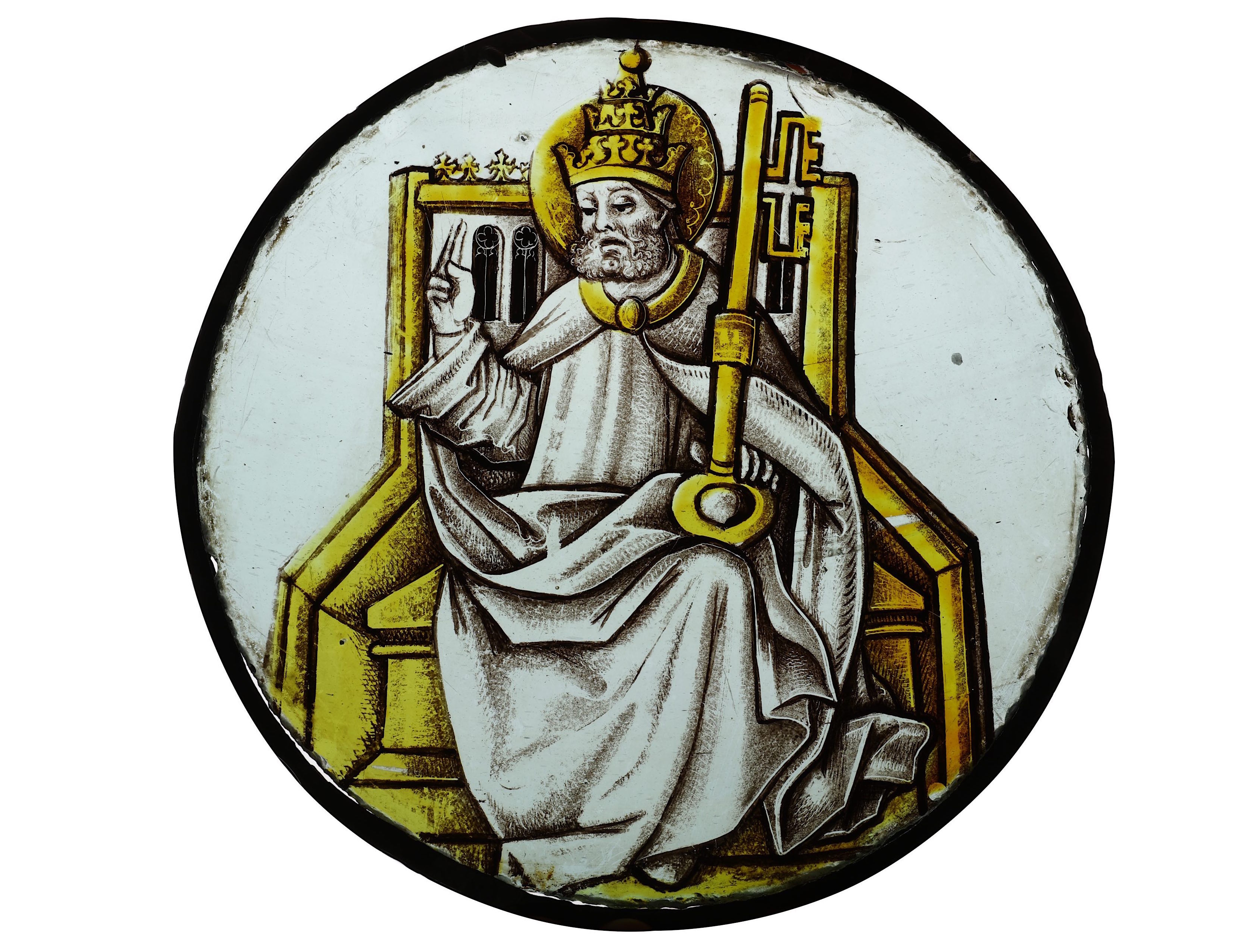It’s my birthday on 22 February. In a normal year, I’d mark it with a short holiday in the company of my ever-loving partner, usually to a location with lots of medieval art and architecture. Lockdown means that’s not an option this year, so instead I’m going to emulate the medieval monks and nuns, locked in their cloisters, embarked on pilgrimages of the mind. Following in their virtual footsteps, my destination is Rome, specifically the Vatican.
It’s an especially appropriate goal for my peregrination, as 22 February is also one of the feasts of St Peter, the “Cathedra Petri” or Chair of Peter. This “relic” (you’ll soon realise why I’m using inverted commas) of the first Bishop of Rome and Pope now stands behind the Vatican’s high altar, surrounded by a magnificent Baroque bronze sculpture by Bernini. But its history and veneration goes back much further and in many ways the relic and its feast epitomises the devotion, emotion, splendour and – let’s be honest – the “bonkersness” of pilgrimage, relics and the medieval Church.
Rome was where the apostles Saint Peter and St Paul were martyred by the Emperor Nero and has been the focus of Christian pilgrimage since the second century. After his conversion to Christianity, Constantine the Great erected magnificent basilica churches over the shrines of the Holy City’s apostolic saints – the Vatican and St Paul without the Walls. The faithful from across Europe, especially lands newly converted to Christianity, flocked to Rome to pray at the shrines of the apostles. Their number included Ine, King of Wessex, founder of Muchelney Abbey, who in 726 abdicated to live out his days in the Eternal City, surrounded by the relics and tombs of the martyrs. The pilgrimage to Rome became known as the pilgrimage “to the threshold of the apostles”, that’s to say the tombs of Peter and Paul. Those making the pilgrimage were called “Romipetae” or “Rome-seekers,” and as explained in a brilliant BBC Radio 4 In Our Time episode on medieval pilgrimage, the modern English verb “roam” has similar origins.
Pilgrims from England to Rome took anything between four and eleven weeks to complete their journey. This was often full of hardships, even physical danger. In 959 Archbishop Aelfsige of Canterbury froze to death in the Alps while journeying to Rome and numerous prelates had to revise their travel plans because of brigands and the violence that ensued from the ongoing spats between various warring Italian city states.
Once they arrived in Rome, the very top destination for pilgrims was the Vatican. The basilica built by Constantine was soon modified to provide pilgrims with access to the very tomb of St Peter, over which it has been built.
Rome was replete with other martyrdom shrines and churches that also demanded attention. Their number included the aforementioned St Paul without the Walls, the Catacombs, and the basilicas of St Laurence, St Agnes, Saints Nero and Achilles, St Pancras and St Valentine.
Also on the must-venerate list was the basilica of St John Lateran. It was built in the fourth century by Constantine as the Pope’s cathedral as Bishop of Rome. By the twelfth century it had established itself as a major rival to the Vatican for the attention of pilgrims.
Although it couldn’t boast the tomb of a martyr, the Lateran was home to an unrivalled collection of relics. These were gathered together in the “Sancta Sanctorum”, the “Holy of Holies”, the Pope’s private chapel. Its wonders included the Arc of the Covenant, the Rod of Aaron, drops of the Holy Blood, part of the Crown of Thorns, garments worn by the Virgin and portions of her milk, fragments of the loaves and two fishes from the Feeding of the Five Thousand, the bones of St John the Baptist, a vestment of St John the Evangelist. But its crowning glories, in every sense, were the heads of Saints Peter and Paul. Pilgrims were allowed close physical proximity to these holy fragments, allowing for a more emotionally intense religious experience than that provided by kneeling at some distance from the tomb of St Peter at the Vatican.
To bring back the pilgrims the Vatican’s canons, or senior clergy, began promoting veneration of what they believed to the very chair used for the enthronement of St Peter as the very first Bishop of Rome. In actual fact, it was nothing of the sort. In 1968, the wooden chair with its ivory mounts was removed from its Baroque casing. Examination by scholars showed that it was made in northern Europe and dated to eight centuries after the time of St Peter, manufactured between 850 and 875. Its ornament was revealed to include a portrait of the Holy Roman Emperor Charles the Bald, its presence leading to the plausible suggestion that he brought the chair to Rome for use during his Imperial coronation on Christmas Day 875.
But I’m minded to cut the canons of St Peter’s and the pilgrims who venerated the relic more than a little slack. I don’t think any deliberate fraud by intended. By the twelfth century, the chair would have been almost 400 years old and would have therefore acquired a patina of age, a venerable air of antiquity. Lacking the benefits of modern science and our sophisticated art historical skills, the faithful would have readily accepted this grand, ancient chair as a genuine relic of the first Pope.
This conclusion would also have been supported by the liturgical calendar. Centuries before the time of Charles the Bald, the Roman Church was already celebrating two feasts in honour of the Chair of Peter: one on 18 January, the other on 22 February. Both feasts were originally associated with St Peter as Bishop of Rome, but by ninth century, the January celebration had become linked to the saint’s stay in Rome, the February feast with his earlier apostolate in Antioch.
The chair, enshrined in its magnificent Bernini case, became a potent symbol of the Pope’s primacy during the Counter Reformation. To this day, the 22 February feast remains in the Roman Calendar.
I must confess that I missed the relic when I last visited the Vatican over a decade ago. But I’ll make good for this in my pilgrimage of the mind. Being a medievalist, I’m hoping my gaze will miraculously penetrate Bernini’s seventeenth-century sculpture, affording not only a visualisation of the ninth-century relic within but also an emotional connection with the medieval pilgrims who made the arduous journey to Rome for its veneration. Now that will be a real birthday treat.



 Loading ...
Loading ...
What do you think?
You can post as a subscriber user ...
User comments (0)